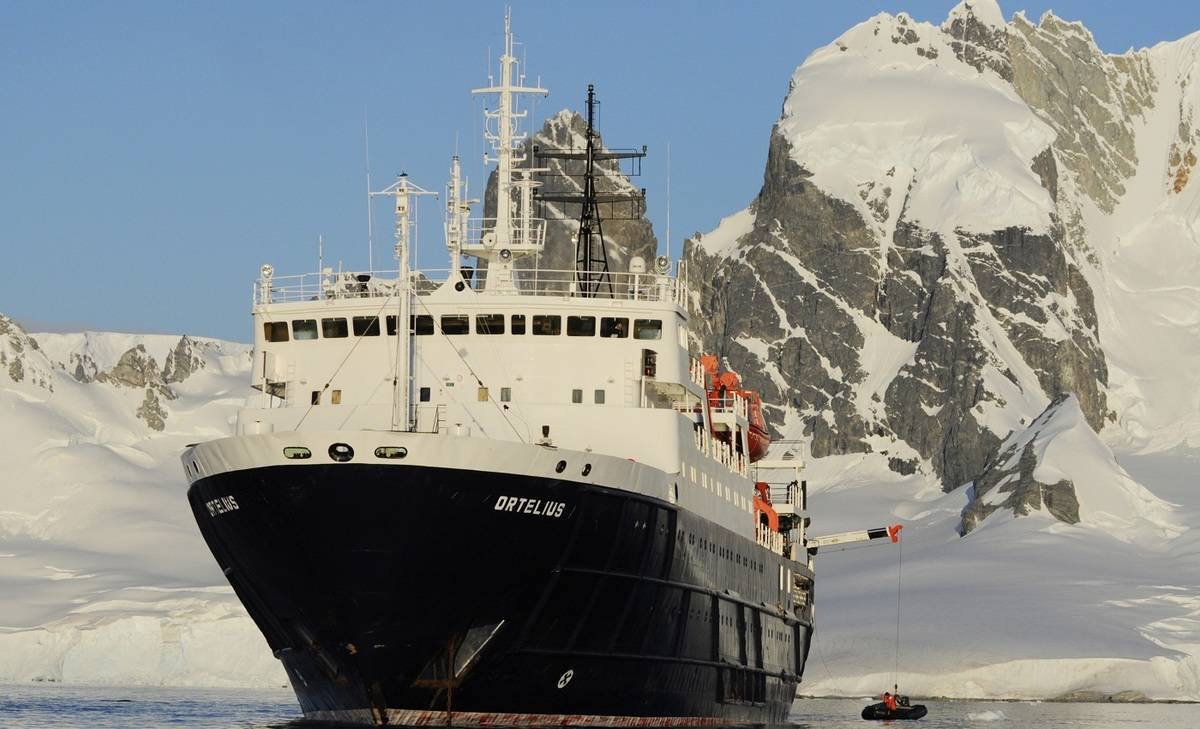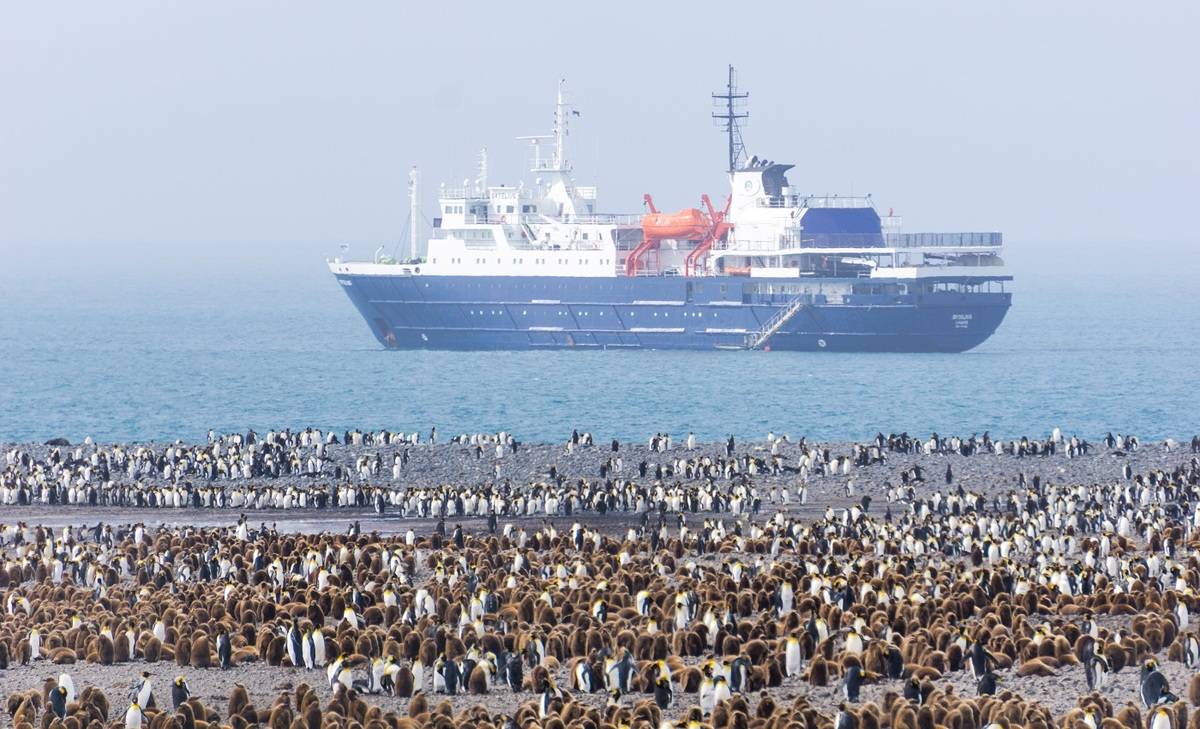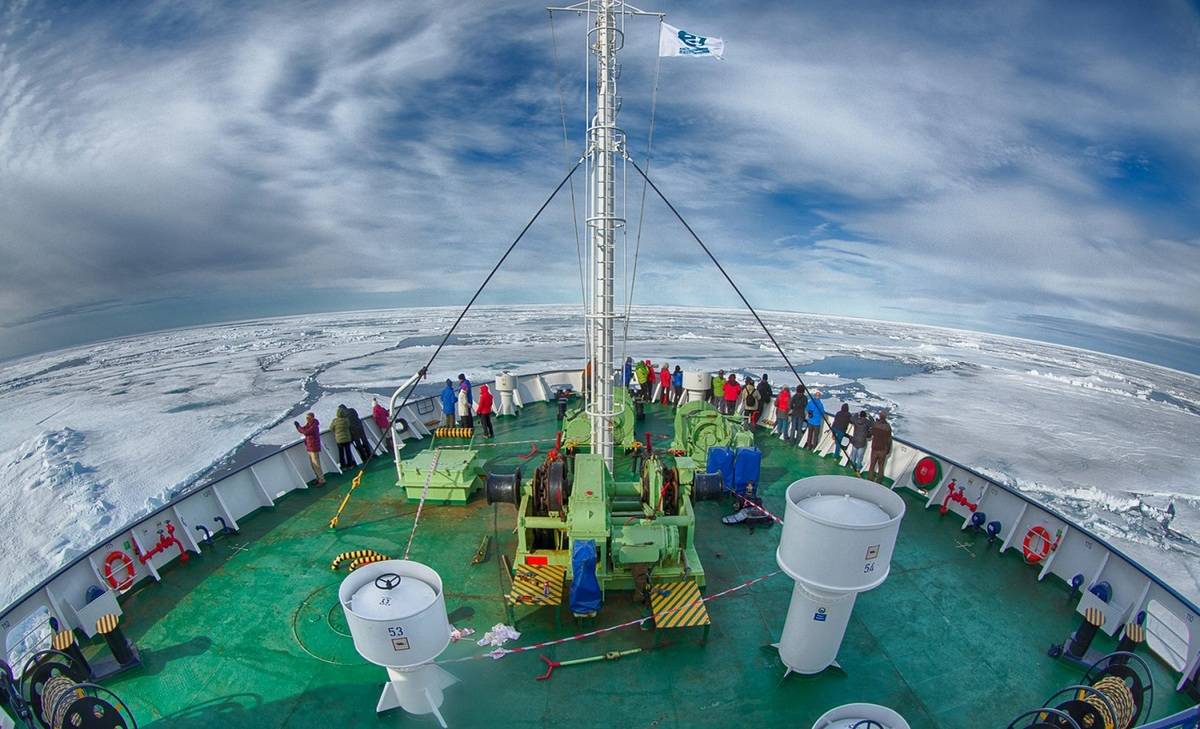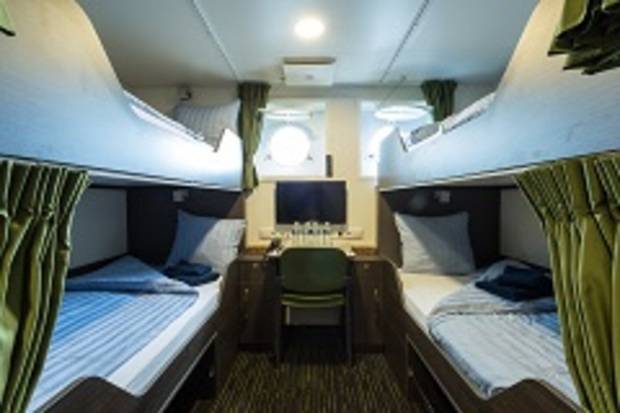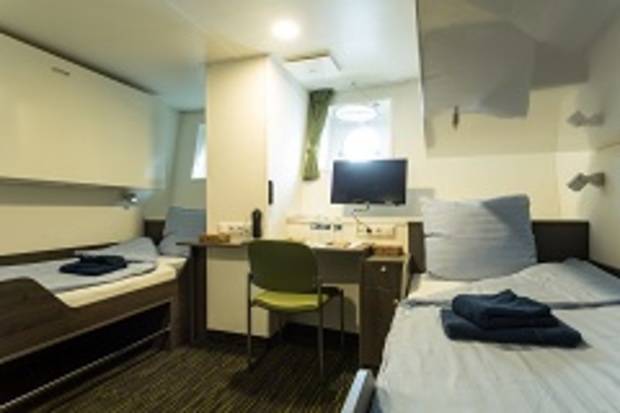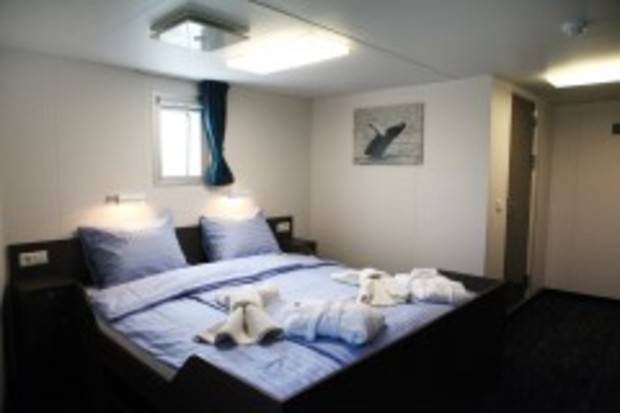East Spitsbergen and Bear Island, In the realm of Polar Bear & Ice
9 Days - Ortelius
The east shores of Spitsbergen are a fantastic place to view gorgeously rugged landscapes and exotic Arctic wildlife, including minke whales, Arctic foxes, and polar bears. And speaking of bears, this exploratory cruise also visits Bear Island – a bird lover’s dream, where large colonies of Brünnich’s guillemots, kittiwakes, and fulmars breed on shoreline cliffs over spans of dazzling drift ice.
from USD $4600 $3600pp
Home » 9 Day M/V Ortelius: East Spitsbergen and Bear Island, In the realm of Polar Bear & Ice
Itinerary Highlights
- We arrive at the southeastern end of Bear Island, a great place for viewing large seabird colonies
- We may encounter sea ice with rutting harp seals. We land at the southern end of Hopen Island, at Koefoetodden, where you can see the remains of 17th-century whaling sites
- We land at the south side of Russebukta, near a tundra with reindeer and great walking opportunities
Itinerary in Brief
- Day 1: Largest town, biggest island
- Day 2: Spectacular Hornsund
- Day 3: The seabird colonies of Bear Island
- Day 4: Rarely visited Hopen Island
- Day 5: Kittiwakes, canyons, and south Edgeøya
- Day 6: Pomor trappers at Russebukta
- Day 7: Guillemot colony and south Spitsbergen
- Day 8: Bell Sund’s flora, fauna, and haunting history
- Day 9: There and back again

Day 1: Largest town, biggest island
You touch down in Longyearbyen, the administrative center of Spitsbergen, the largest island of the Svalbard archipelago. Enjoy strolling around this former mining town, whose parish church and Svalbard Museum make for fascinating attractions. Though the countryside appears stark, more than a hundred species of plant have been recorded in it. In the early evening, the ship sails out of Isfjorden, where we might spot the first minke whale of the voyage.
Day 2: Spectacular Hornsund
We start the day by quietly cruising the side fjords of the spectacular Hornsund area in southern Spitsbergen, enjoying the scenery of towering mountain peaks. The mountain of Hornsundtind rises to 1,431 meters (4,695 feet), while the peak of Bautaen testifies to why early Dutch explorers gave this island the name Spitsbergen, meaning “pointed mountains.”
There are 14 magnificent glaciers in the area, and we have a fair chance of encountering seals and polar bears. The nearby cliffs of Sofiakammen are also home to thousands of pairs of nesting kittiwakes and little auks, and in the evening, we might see thousands of harp seals rutting on ice floes at Sørkapp.
Day 3: The seabird colonies of Bear Island
We arrive at the southeastern end of Bear Island, a great place for viewing large seabird colonies. The nearby nesting cliffs are part of an extensive nature reserve where large ships are not allowed to bring passengers on shore. Afterward we’ll sail northeast into Sorhamna, where we can get closer to the seabird cliffs. Chiefly Brünnichs guillemots, kittiwakes, and fulmars nest here.
Just north of this, in Kvalrossbukta, we will land and see the remains of a whaling station from early in the previous century. We might also make a landing in a shallow valley, such as Rendalen, and look for (at a safe distance) great skuas, large seabirds known to be fiercely territorial. As we continue north along the east side of Bear Island, we may still encounter dazzling shoals of drift ice.
Day 4: Rarely visited Hopen Island
On the way to Hopen, we may encounter sea ice with rutting harp seals. We land at the southern end of Hopen Island, at Koefoetodden, where you can see the remains of 17th-century whaling sites. Through nearby Bekkeskaret is an easy route to Kvasstoppen (190 meters, 620 feet) and the remains of a plane from World War II. Hopen Radio station is the most remote manned weather station in all of Svalbard.
Day 5: Kittiwakes, canyons, and south Edgeøya
Sailing along the western side of the Tusenöyane (where we’re not allowed to land in summer), you may see polar bears and walruses as we approach Risetreppen. This beautiful canyon features an accessible kittiwake colony. During our walk, we may encounter reindeer on the lush tundra.
Day 6: Pomor trappers at Russebukta
At Ardalstangen, we go on shore in an area with lakes and different species of waterfowl. Nearby in Habenichtbukta, we can look from some distance to a wintering site of 18th-century Pomor trappers, who often stayed for years in the same place. Later in the afternoon, we land at the south side of Russebukta, near a tundra with reindeer and great walking opportunities.
Day 7: Guillemot colony and south Spitsbergen
Today we aim to land at the mountain of Stellingfjellet, near the largest colony of Brünnich’s guillemots in Spitsbergen. Later in the day, we will make landings at the rarely visited coast of south Spitsbergen, at the bay of Isbukta.
Day 8: Bell Sund’s flora, fauna, and haunting history
We continue our voyage in Bell Sund, one of the largest fjord systems in Svalbard. The ocean currents make this area slightly warmer than other areas in the archipelago, which shows in the relatively lush vegetation. Here there are excellent opportunities to enjoy both history and wildlife.
One possibility is Ahlstrandhalvøya, at the mouth of Van Keulenfjorden, where piles of beluga skeletons can be found. These remains of 19th-century whale slaughter are a haunting reminder of the consequences of rampant exploitation. Fortunately, belugas were not hunted into extinction, and you might even see one here. Alternately, we may land at Millarodden at north side of Bell Sund. Here we can see a walrus haul-out site and possibly make an excursion on the tundra of Ingeborgfjellet, with its thousands of little auks.
Day 9: There and back again
Our adventure comes to an end exactly where it started. Today you disembark in Longyearbyen, taking away memories that will accompany you wherever your next journey lies.
| Dates | Cabin | From | Special Offer |
|---|---|---|---|
| 02 Jul 2024 - 10 Jul 2024 | USD $3600pp | Save up to US$1000 | |
| Quadruple Porthole Cabin | USD $3600pp | Save up to US$1000 | |
| Triple Porthole Cabin | USD $4500pp | Save up to US$1000 | |
| Twin Porthole Cabin | USD $5400pp | Save up to US$1000 | |
| Twin Window Cabin | USD $5900pp | Save up to US$1000 | |
| Twin Deluxe Cabin | USD $6300pp | Save up to US$1000 | |
| Superior Cabin | USD $7300pp | Save up to US$1000 | |
**Prices are per person based on twin / shared accommodation.
**Single supplements may apply
Cabin Details
Quadruple Porthole Cabin
Located on deck 3; two porthole windows, 2 upper and 2 lower berths, private shower and toilet, desk and chair, hair dryer and ample storage space.
Triple Porthole Cabin
Located on Deck 3; two portholes, 1 upper and 2 lower berths, private shower and toilet, desk and chair, hair dryer and ample storage space.
Twin Porthole Cabin
Located on Deck 3 and on Deck 4; two porthole windows, private toilet and shower, two single lower berths, desk and chair, hair dryer and ample storage space. Cabins on deck 4 are quieter than cabins on deck 3: farther away from the noise of engines and generators. Access to the forward observation deck.
Twin Window Cabin
Three windows; 2 lower berths; Private shower & toilet; Desk & chair; Flatscreen TV; Telephone & WiFi (supplemented); Hair dryer; Ample storage space
Twin Deluxe Cabin
Located on Deck 5; three windows; 2 lower berths; Private shower & toilet; Desk & chair; Small sofa; Refrigerator; Coffee & tea maker; Flatscreen TV; Telephone & WiFi (supplemented); Hair dryer; Ample storage space
Superior Cabin
Located on Deck 5; two windows minimum, one double bed, one single (sofa) bed, private toilet and shower, desk and chair, flat screen TV, refrigerator, hairdryer, coffee & tea maker, ample storage space. The quietest cabin deck and has the best access to upper observation decks and the ship's bridge.
Ortelius Deckplan

Specifications
- Passengers: 116-123 in 53 cabins
- Staff & crew: 52
- Length: 90.95 meters
- Breadth: 17.20 meters
- Draft: 5.4 meters
- Ice class: UL1 (Equivalent to 1A)
- Displacement: 4090 tonnes
- Propulsion: 6 ZL 40/48 SULZER
- Speed: 10.5 knots average cruising speed
- Year built: 1989
Whats included?
- Voyage aboard the indicated vessel as indicated in the itinerary
- All meals throughout the voyage aboard the ship including snacks, coffee and tea.
- All shore excursions and activities throughout the voyage by Zodiac.
- Program of lectures by noted naturalists and leadership by experienced expedition staff.
- Free use of rubber boots and snowshoes.
- Transfers and baggage handling between the airport, hotels and ship only for those passengers on the group flights to and from Longyearbyen.
- All miscellaneous service taxes and port charges throughout the programme.
- AECO fees and governmental taxes.
- Comprehensive pre-departure material.
What’s not included?
- Any airfare, whether on scheduled or charter flights
- Pre- and post- land arrangements.
- Passport and visa expenses.
- Government arrival and departure taxes.
- Meals ashore.
- Baggage, cancellation and personal insurance (which is strongly recommended).
- Excess baggage charges and all items of a personal nature such as laundry, bar, beverage charges and telecommunication charges.
- The customary gratuity at the end of the voyages for stewards and other service personnel aboard (guidelines will be provided).
Notes
PLEASE NOTE:
All itineraries are for guidance only. Programs may vary depending on ice, weather, and wildlife conditions. Landings are subject to site availabilities, permissions, and environmental concerns per AECO regulations. Official sailing plans and landing slots are scheduled with AECO prior to the start of the season, but the expedition leader determines the final plan. Flexibility is paramount for expedition cruises. The average cruising speed of our vessel is 10.5 knots.














